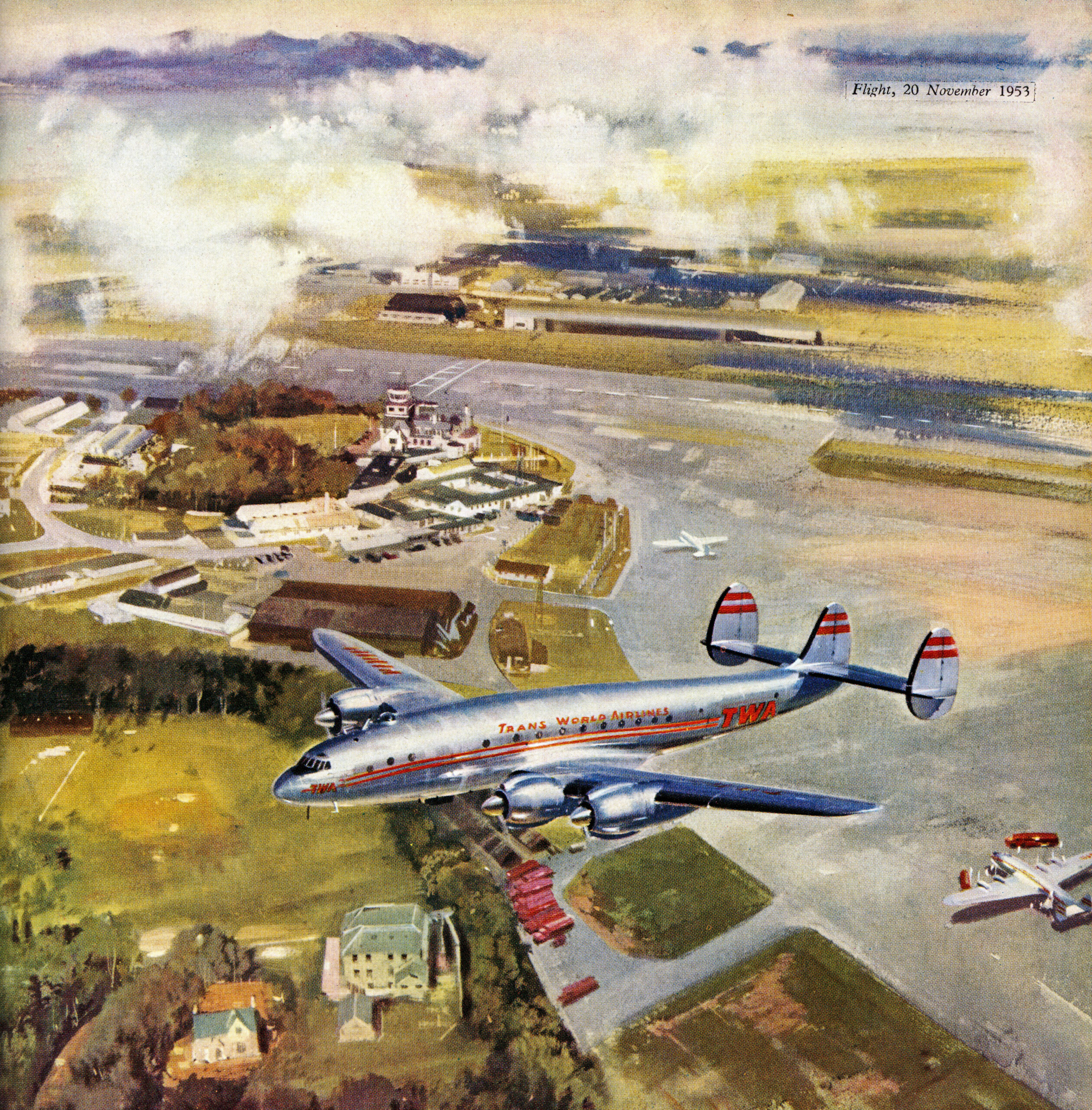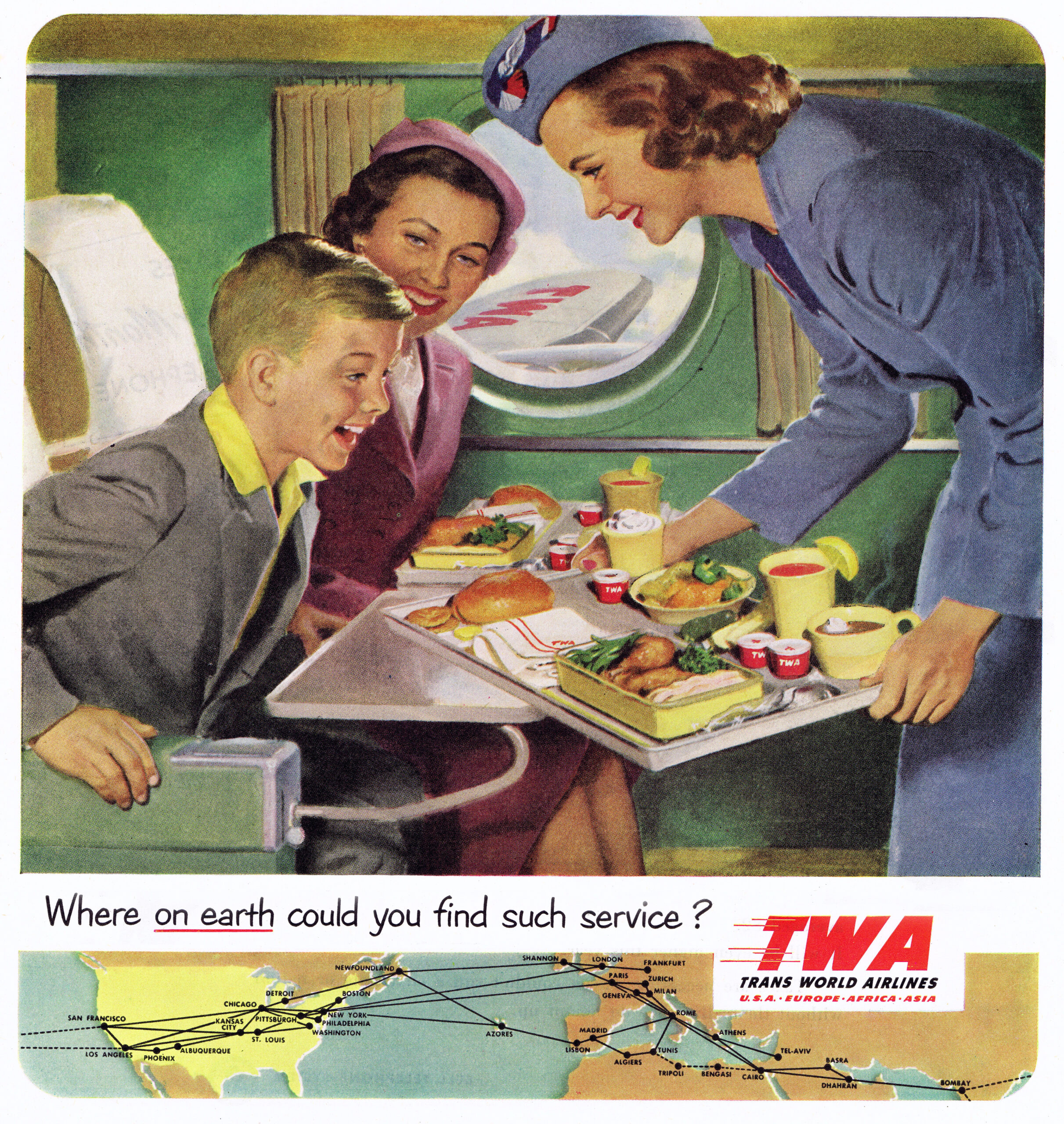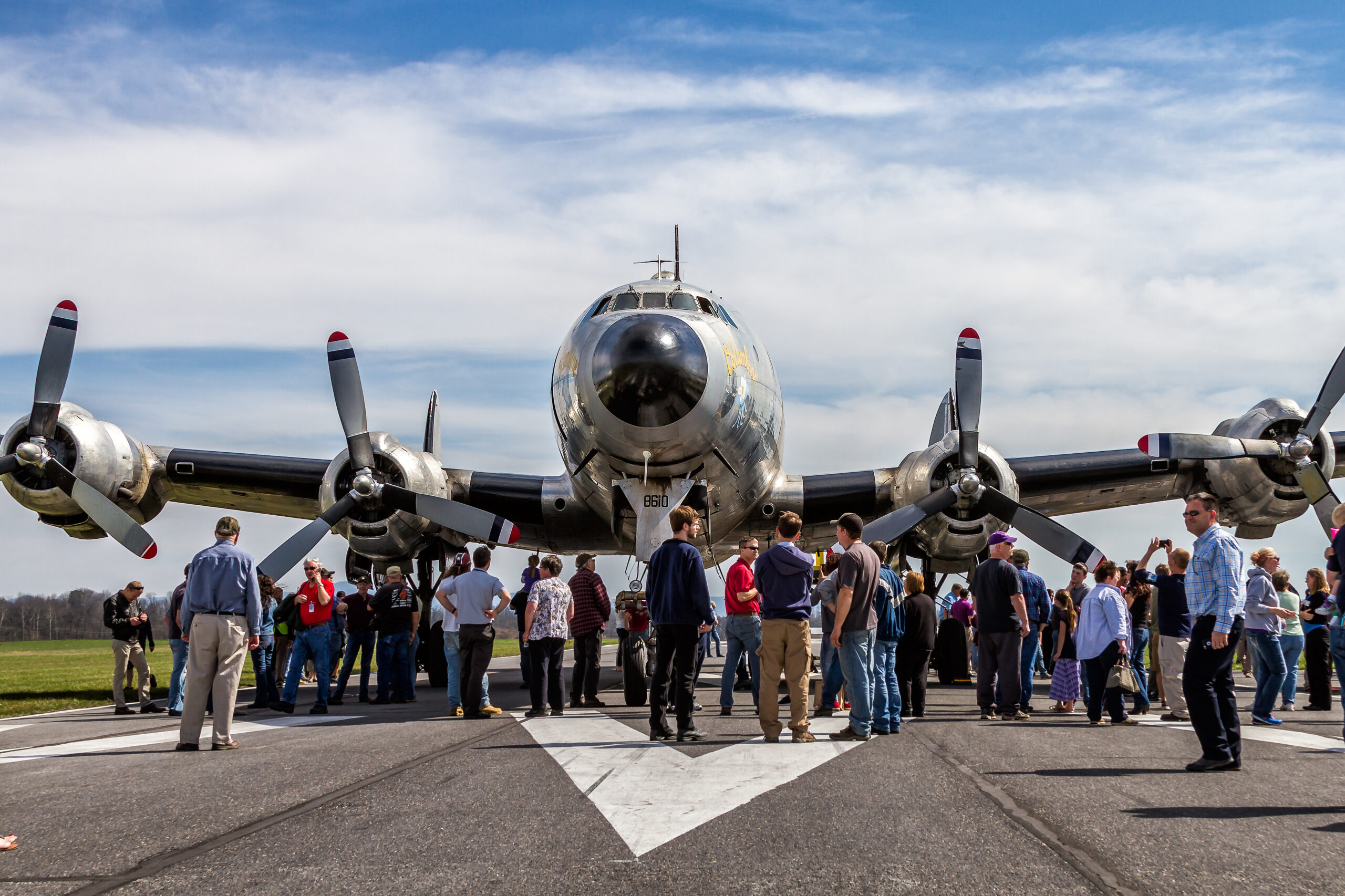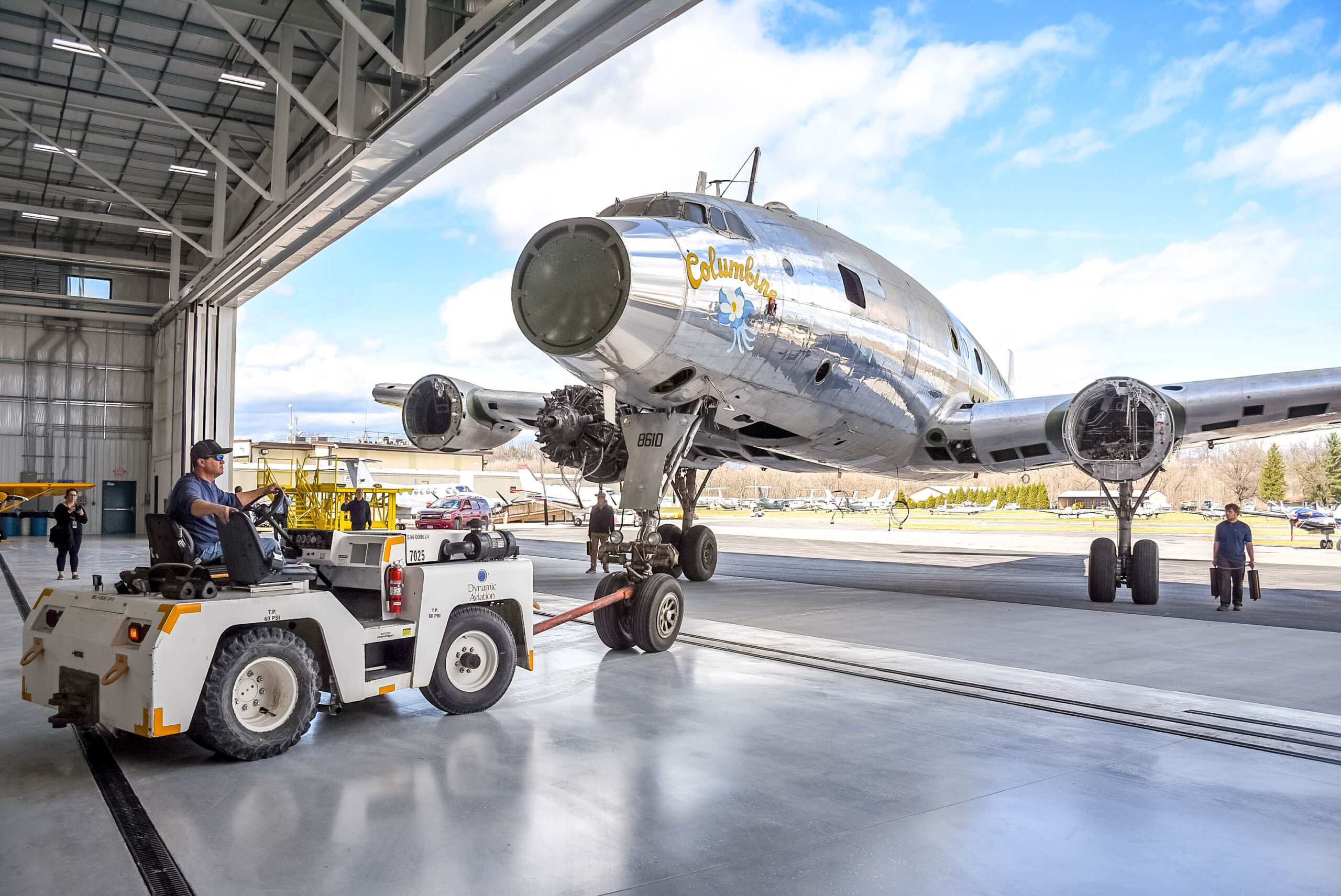

The Lockheed Constellation
Introduced in 1943, the Lockheed Constellation was the first pressurized airliner to go into widespread commercial use. Powered by four 18-cylinder Wright R-3350 radial engines, its pressurized cabin enabled commercial passengers to fly well above bad weather for the first time. In 1939, TWA’s Howard Hughes had requested a 40-passenger transcontinental airliner with a range of 3,500 miles. When the Constellation first started flying near the end of WWII, the aircraft had a service ceiling of 24,000 feet, a cruise speed of 340 mph, and a maximum speed over 375 mph – faster than that of a P-40 Warhawk fighter. The age of the luxury airliner had begun.
TWA transatlantic Constellation service started on February 6, 1946, with a New York to Paris flight. On June 17, 1947, Pan Am opened the first-ever scheduled round-the-world service with their Clipper America. Sleek and powerful, the venerable Constellation achieved legendary status in the aviation world. Jet airliners would eventually render the Constellation obsolete and the last regular commercial flights in North America took place in 1968. ‘Connies’ would be relegated to cargo service while jets overtook the commercial airways.
If this plane could speak, imagine the stories it could tell.
Air Force One
In May 1954, Air Force flight 8610 checked in with Air Traffic Control as they flew over Richmond, Virginia. Eastern Airlines flight 8610 also checked in, causing confusion for both ATC members and flight crews. Officials learned that Air Force 8610 – Columbine II – was carrying President Eisenhower. At a meeting with several government agencies, Colonel Bill Draper, the pilot in command and Air Force Aide to the President, suggested a new call sign for the President’s plane: Air Force One. The call sign met with the approval of the others present, and Lockheed Constellation serial number 8610 thus became the very first Air Force One.
“This was the plane that carried my granddad to Korea when he fulfilled a campaign promise that he would go as president-elect to see what could be done about the war American troops were fighting there,” explains Mary Jean Eisenhower, granddaughter to the 34th president. “My favorite picture of him is the one of him eating with the troops in Korea while he was president-elect. His ‘fleet’ of airplanes were all named Columbine because that is the state flower of Colorado. My grandmother, Mamie, was from Denver.”
“As soon as I saw the interior of the airplane again, the hair on the back of my neck stood up. It’s not yet fully restored, but it looked so familiar. On my first visit, I fell head over heels in love with the airplane.”


America’s Airplane
During the Eisenhower presidency, the United States placed a priority on maintaining world peace in the face of the expanding communist influence propagated by the Soviet Union’s aggressive global influence. Following WWII, the United States had become a global leader in economic, political, military, cultural, and technological affairs. American society became more affluent in the postwar years than most Americans could ever have imagined.
First Air Force One was the presidential aircraft from January 1953 to November 1954 and the principal backup until 1959. The restoration of this iconic aircraft gives Dynamic Aviation a unique opportunity to share President Eisenhower’s legacy and the greatness embodied in his era.
When completed, the aircraft will be a ‘living museum’, traveling the country to allow people to connect with the greatest office in the world. She is the only privately owned Air Force One in existence. We have an unmatched opportunity to bring this iconic representation of American Leadership to the American people. First Air Force One can be used in educating the American public to better understand this era of our history and give us hope for a bright future.
To ready the plane for its first flight in 12 years to the restoration location in Bridgewater, VA, an expert team spent a year working on the engines, the fuel system, hydraulic system, electrical system, airframe, and fire system. “To begin with, every major component or accessory was removed from the engines and sent out for overhaul,” explains Brian Miklos, Arizona Project Manager. “Lines, hoses, rubber parts, seals – each one was replaced. They examined the engines, x-rayed the propellers, replaced fluid lines and spark plugs, cleaned and repaired fuel injectors.”
“Fuselage and wing corrosion was surprisingly not a major issue,” he continues. “She had been in the desert for quite a while, and the atmosphere was tremendously kind to her.”
Granddaughter to 34th President Dwight Eisenhower, Mary Jean Eisenhower, spoke to a rapt audience of elected officials and media as she stood in front of the Lockheed VC-121A-LO Constellation. Originally named for her grandmother’s state flower, the Columbine, the aircraft was ready for her ferry flight on March 21, 2016. “If this plane could speak, imagine the stories it could tell,” she said. “I remember flying on it when I was only four or five,” Mary Jean said to the audience, “I used to sit up front and talk to the pilots.”
After a year of intense labor, First Air Force One took to the skies once more for its first flight since 2003. The aircraft performed beautifully and landed at the Bridgewater, VA restoration site on March 23, 2016
Your investment in this project will allow us to leave a legacy to future generations of dignity, freedom, and peace through America’s role in today’s world.
